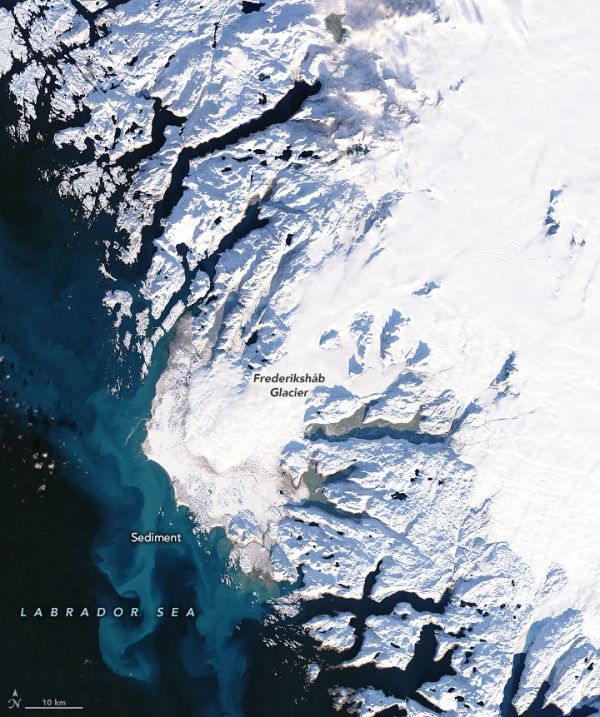Greenland’s glaciers function like bulldozers, grinding away and pulverizing rocks along the land surface as they creep through valleys toward coastal waters. The process produces a fine-grained powder of silt and clay called glacial flour that accumulates underneath and around glaciers. This powder often accumulates in deltas and in meltwater lakes and streams that form along the edges of these slow-moving rivers of ice. Since the particles are so fine, they are slow to sink and often remain suspended in water longer than other types of sediment.
The presence of silt can sharply change the appearance of water. When sunlight hits silt-rich water, particles absorb the shortest wavelengths: the purples and indigos. Water absorbs the longer wavelengths: reds, oranges, and yellows. That leaves mainly blues and greens that get scattered back to our eyes, often giving silty water a striking turquoise color. Water full of glacial flour can also appear milky green or brown depending on lightning conditions and the concentration of the silt.
Continue reading at NASA Earth Observatory
Image via NASA Earth Observatory


